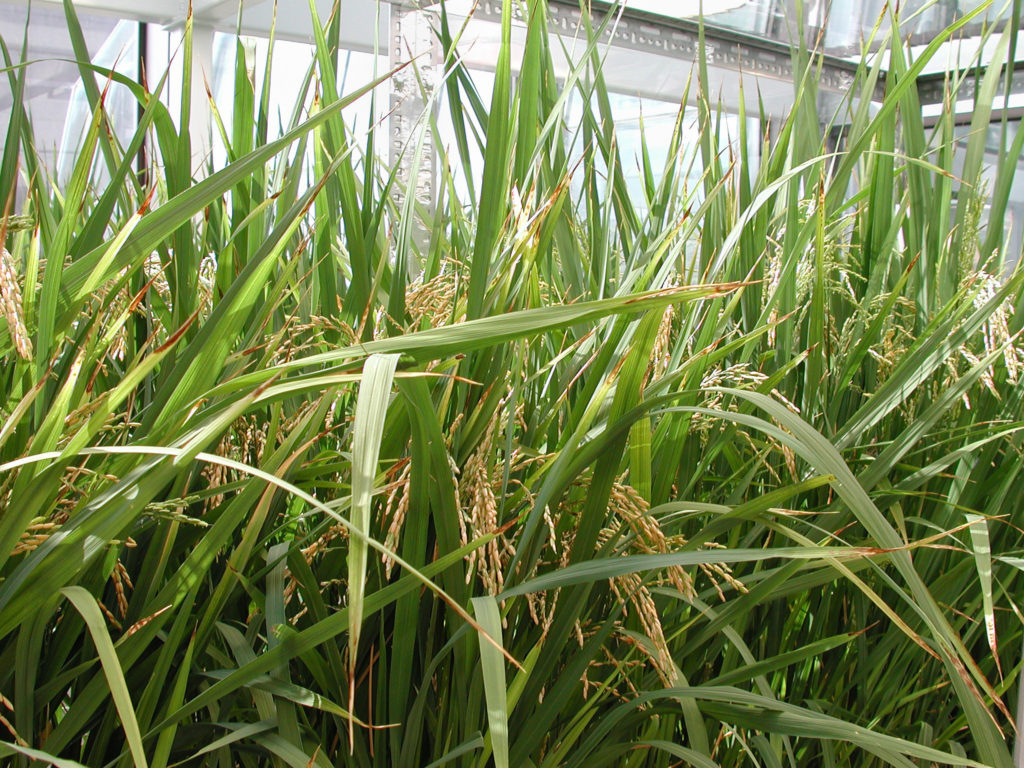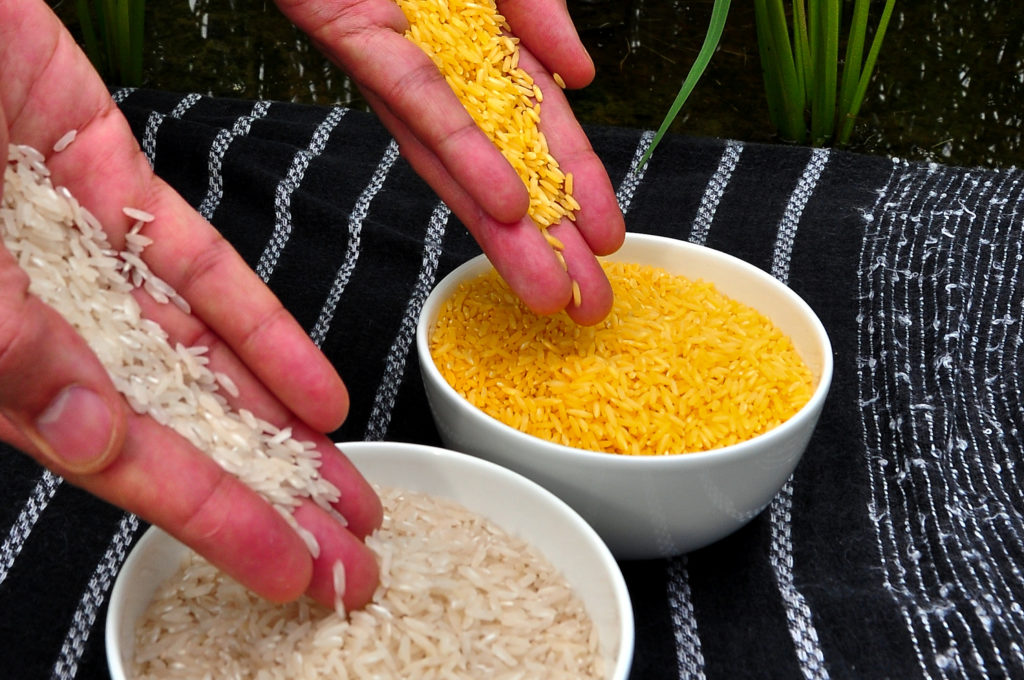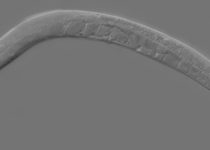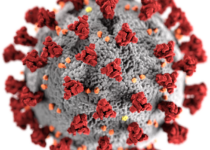While Trying To Shield It From Climate Change Through Genetic Modification, Scientists Unintentionally Increase The Yield Of Rice Too

Climate change is expected to negatively affect agriculture through heat waves as well as unseasonal rains. To ensure that this doesn’t result in a food crisis, researchers around the world are racing to develop crop varieties that are resistant to climate change. One of the most widely used methods to achieve this goal is genetic engineering. And one of the crops that has most widely been the subject of genetic engineering, not just to make it resistant to climate change, but also to increase its yield and nutritional value, is rice.
Over the years, rice has been genetically engineered for several purposes. Golden Rice is a variety in which phytoene desaturase gene, which is normally found in bacteria, has been introduced through genetic engineering. This helps the plant produce a large quantity of beta carotene, which gives the rice its signature golden color. When golden rice is consumed, this our body converts this beta carotene into Vitamin A, a vital nutrient. This has helped deal with the problem of Vitamin A deficiency in children in countries where rice is a staple food. You can read more about genes in this previous post by me.

While rice grows in water, it cannot survive if submerged completely during floods. As climate change leads to more floods, this will become more of a problem. In 2010 for example, floods destroyed 4 million tons of rice in India and Bangledesh. However, by introducing a single gene, namely Sub1A, into rice, scientists have been able to make rice survive completly submerged in water for up to two weeks. In fact, findings suggest that this rice variety is resistant not just to floods but droughts too, making it a particularly useful tool to fight the food crisis that could be triggered by climate change.
Scientists have also introduced a gene called cryIA(b) into rice, which makes rice resistant to pests like rice borers. This gene, which is normally produced by Bacillus thuringiensis bacterium, produces toxins that kill insect pests. The benefit of using this rice variety is that its crop dosen’t need to be regularly sprayed with pesticides, which are not just detrimental to environment but are also harmful to humans. Similarly, scientists are also developing herbicide resistant variety of rice, as well as a rice variety in which formation of certain allergens will be repressed to prevent them from triggering allergies in some people.
There are many human proteins that are in high demand to treat various health conditions, and yet have until recently been in short supply. These include insulin for diabetes, growth hormone for dwarfism, lactoferrin and lysozyme for use in infant formula and rehyderation products, and human serum albumin for treatment of severe burns, hemorrhagic shock and liver cirrhosis. Out of these proteins, insulin and growth hormone are now produced by genetically engineered bacteria in which their genes were introduced, while human serum albumin, lactoferrin and lysozyme are being produced by genetically engineered rice, in which their genes were introduced.
There are also efforts going on to improve the process of photosynthesis in rice to increase its yield, to combat climate change and rising food demand. The basic chemical reactions of photosynthesis are the same in all plants. But there are other details that divide photosynthesis in plants into two categories, namely C3 and C4 photosynthesis. C4 photosynthesis leads to faster growth of the plant, as it captures more carbon dioxide using specialized cells. Some plants use C3 photosynthesis and others use C4. Plants like corn and sugarcane grow very quickly because they use C4 photosynthesis.
But introducing C4 photosynthesis in rice (which normally uses C3) is hindered by the fact that some of the genes involved in production of the specialized cells, which capture carbon dioxide, are still unknown. However, in the case I will describe in this post. scientists took a different approach to improve photosynthesis, with the objective of making rice heat resistant to combat climate change. And this time, they have succeeded not just in making rice heat resistant, but also in improving its yield, which was apparently not even their objective.
Creating Heat resistant Rice To Combat Climate Change
The process of photosynthesis takes place in a compartment inside the plant cell, called chloroplast. But photosynthesis also produces certain chemical byproducts known as free radicals, which are highly reactive and can damage proteins. This is significant in the context of attempts to make photosynthesis more efficient, as many of the proteins involved in photosynthesis are produced from genes in the chloroplasts themselves. This means that due to the high amount of free radicals produced from photosynthesis in the chloroplast, the process of production of these proteins is inefficient, as it is prone to chemical damage from free radicals.
While this isn’t much of a problem in normal conditions, it leads to death of the plant during heat waves, as heat puts a strain on photosynthesis by accelerating some of its chemical reactions and slowing down others. This leads to formation of more free radicals than the plant can handle, reducing the survival rate of the plants during a heat wave. A protein called D1, which forms a part of the molecular apparatus of photosynthesis, is one of the components affected by free radicals, as its gene, called psbA, is found in chloroplast, and it is synthesized in chloroplast.
Hence, to make photosynthesis more resistant to damage caused by heat, scientists introduce a copy of the psbA gene in the nucleus of the cell, in which case the synthesis of D1 would happen in the cytoplasm of the cell, instead of chloroplast. And since there are far less free radicals in the cytoplasm than in the chloroplast, the D1 produced in cytoplasm would be far less vulnerable to them during its synthesis. After being synthesized in the cytoplasm, the D1 protein would be transported into the chloroplast to participate in photosynthesis. The gene in the nucleus was engineered in a way that it would synthesize D1 only during excess heat.
As expected, the resultant rice was significantly more likely to survive excess heat than normal rice. What came as a surprise, however, is that at normal temperature, the transgenic rice grew faster and yielded 20% more grains than normal rice. The increased yield should help mitigate the food crisis that might be brought about by climate change. This shows that a more efficient photosynthesis not just makes the plants resistant to heat, but improves their general health and robustness. This is actually similar to how plants that use the more efficient C4 form of photosynthesis, like corn and sugarcane, grow faster than plants that use the C3 form of photosynthesis.
The fact that a nuclear copy of the psbA gene, a gene that is normally found in the chloroplast, improves photosynthesis, a process that happens inside the chloroplast, should also be seen in the context of evolution. Chloroplast, just like mitochondria, was originally a prokaryotic microorganism, probably a kind of bacteria, that entered a larger cell more than a billion years ago. This process was similar to how pathogenic bacteria today invade human cells. But in this case, a symbiotic relationship was established between the invading microbe and the larger cell. The larger cell benefited from the products of photosynthesis produced by the microbe, and the microbe got shelter and protection from outside environment by being inside the larger cell.
This event eventually led to evolution of the plant kingdom. Over time, the microbe lost a lot of its functions, that it no longer needed as it was now in a safer environment inside the host cell, and many of its genes gradually got transferred to the nucleus of the host cell. It was at this point, that the microbe basically became an integral part of the host cell and is now known as chloroplast.
So, increase in efficiency of photosynthesis by the introduction of psbA gene in nucleus isn’t that surprising, when you realize that many other genes of the chloroplast, many of which also produce components of photosynthesis, were also naturally transferred to the nucleus during the course of evolution, as they too worked better outside chloroplast, due to the lesser level of free radicals there. Hopefully, this approach will indeed help make not just rice, but other crops too, resistant to heat waves as well as capable of giving higher yields, giving us one more weapon in the fight to deal with climate change. Here is a Science magazine article detailing the team of scientists involved in this work.


